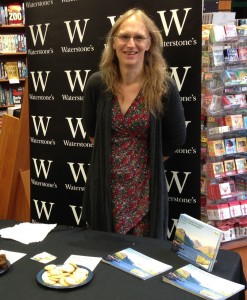Tess Baxter set up Dane Stone Cards in 2001 to publish her own work. She was interesting in finding a way of reviving recipes from old community cookbooks. Some were still popular, but others had been forgotten. Many had a strong association with place, so linking them with local photographs seemed appropriate.
She has written and designed two books published through Dane Stone Publishing. The books grew out of a range of postcards that covered the whole of the north of England. The postcards were withdrawn in 2014, at which point Dane Stone Cards changed their name.
Tess has a wide experience as a freelance writer, researcher and photographer on food and the arts. She will be willing to discuss any projects you may be considering. She has her own website at www.tessbaxter.com that shows her range of creative work.
The Lake District and Cumbria in Recipes and Photographs was republished in 2015 in a third edition that continues to be available in print. Yorkshire: In Recipes and Photographs was published in 2011 and went of print in 2017. Both books are based on Tess’s own research on traditional food and local and social history, and her food and landscape photography.
Tess says:
“The research for the recipes was based on community cookbooks published between 1910 and 1950. My project was always much more than copying recipes. Several sources were compared, and the recipes tested and rewritten. Background research was undertaken to understand the social history that lay behind the recipe.
These cookbooks were compiled by local people, mainly women, for local fundraising projects. At the time they were written, women were largely absent from public life, and the books represent a rare opportunity for ordinary women to be recognised and seen in print. They always named individually the (mostly) women that contributed with a credit next to the recipe.
I believed that it was important to recognise their part in what I have created in my books. I have produced downloadable bibliographies for both books which list all the material I looked at. They record the names of the women who contributed a version of the recipes that I have published in the books. There is for the Lake District and Cumbria book.
You won’t find the extravagant recipes of the aristocracy, or claims of the ‘best’ or ‘original’ or ‘authentic’ in my books. What I have tried to do is to be honest to the community-based traditions of the cooking of everyday people.”

